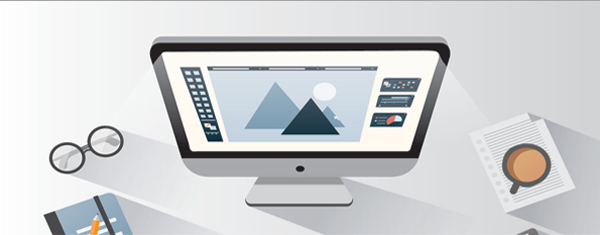UX Design is like a butler who reaches the newspaper at the right moment.
An invisible service to the user is what user experience design should be. Still, too many websites or apps are just frustrating. We asked experienced UX experts about their personal gold standards. Let's scroll down and dive deeper behind those big minds' gloden standards.
Be always close to the user!
One of the most important basic prerequisites for a successful user experience is still close contact with users to learn more about their needs and habits. Ideally, you should become the user of the product, because only in this way you can understand the motivations behind it. “The studies do not have to be large, "says Fabian, UX designer at Jimdo in Hamburg. “You can, for example, write to users and then talk to them or visit them at home.” It is not about taking over the ideas of the conversation partners, but recognizing their hurdles and desires.
Start prototyping as early as possible!
“Show, don’t tell” is one of the most important lessons for Mike Kotsch :“having ideas and tell someone what it is, but really creating something, giving people into the hands and observing them are quite different.” Therefore, he tries to build a minimum viable product, so it can be tested. It is only then that he can estimate how it feels and how much his expectations differ from those of other users. The way to the goal? The right balance of intuition and confirmation will be kept through user tests.
Test functionality and efficiency!
It seems almost unnecessary to point out: Testing repeatedly whether links and switch-offs can work. It is frustrating and annoying when you as a user click dead links and other visual elements that simply do not react. Fabian advises on early testing, just of unfinished artifacts. “If an app loses all its non-persistent user data after the reload, then it should take precedence over send transitions or funny illustrations.”
Don’t overload the interface!
Avoid unnecessary actions, inconsistencies, and unknown functions. They do not lead the user to the desired goal and bring in his interactions. “Too much content and decision-making possibilities overwhelm the user, "says Sonke Kühl. The Freelance UX Designer from Hamburg advises, according to the KISS principle (keep it simple, stupid), reduce the content of essential components. This applies not only to text blocks, but also to layout, scripts and typography.
Long loading times are pure poison
The current web design works much with fullscreen videos, opulent pictures and animations, but unfortunately need time to load. And although websites become more complex, users expect them to load quickly. Internet users are impatient. According to a study by the American software provider Smart-bear, 57 percent of the users leave the website after a wait of three seconds.
If you want the user to use the website or mobile app that you have designed, the impact of possible loading times should be considered in design decisions.
Loss of control hurts the experience
Automatically played videos and automatic scrolling are increasingly moved into web design. But there is a big catch. “Automatically triggered actions lead to an incapacitation of the user, who would rather control the movement via the website or application, "Fabian points out.
Nadine Kintscher, Usercentered Researcher from Luxembourg, explains in her article "User control and cognitive overload, how UX technologies can help" in the LinkedIn blog, why users react irritably and reactively when they are deprived of control and videos, music or sounds automatically.
You should use these elements extremely sparingly and only when the user expects them.
Please no cryptic icons!
The understanding that the visitor is always looking for content is the key to an attractive user experience. The UX design should help the user as much as possible in this search. This requires a user-friendly, clear navigation system that guides the user to the content with as few clicks as possible
At any time, to make an overview of where he is and where he can go. Icons should provide for an overview, sometimes these are already creative, but unfortunately ambiguous. The question of whether the target group is able to deal with a hamburger menu without explanation, one has to be easy as UX Designer. Fabian points out :"With icons without text labs, UX designers threaten their users."
Textlabels also puzzled Christian Raschke: “The user does not come to the website, to get rid of the boredom by the dechifrating cryptic icons.”
Readability is trump!
The user interface design must not affect the consistency of the website: moving background can quickly distract the user from content. “Too small or inappropriate Typo will force the user to leave”, Fabian knows. Also bad color selection and lack of contrasts restrict the readability of the website. Light gray step in front of white background is strenuous for the eyes, as well as white step on black ground. Pay attention to line length, line height, and line spacing, kerning, and legible steps.


Comments
Post a Comment